My relationship with change is complicated. I get anxious considering the uncomfortable steps it requires; however, I’m attracted to the new possibilities it creates: better health, a new look, a change of scenery, and different responsibilities. The thought of change causes fright. The notion of a mundane life repulses.
When it impacts only myself, I’ve gotten better with change. When considering the impact on those I love, it has become harder. While the excitement of something new fires me up, it also leaves me feeling selfish.
I told you, it’s complicated.
Connecting on Three Levels:
Recently, I attended a virtual conference focused on high-performance in sports. There were fascinating speakers from the Premier League, NBA and the NHL. Who would have thought the presenter who impacted me the most would come from the luxury fashion industry?
Kim Wylie is the global director of people development and change at Farfetch. According to Wylie, a leader must connect on three levels to produce lasting change.
- The Head-Rational Connection: How does it connect with the big picture? When discussing change leaders should explain how the change is affecting the larger operation. People need to know they are making contributions to something larger than themselves. When a leader asks an individual to change, it’s critical to articulate the impact it will create.
- The Heart-Emotional Connection: What’s in it for them? Wylie contends that this is the hardest level of connection but the most important. Leaders must work to make others feel a part of the change and allow them to shape the transition. Allowing individuals to own their new role enhances buy-in.
- The Feet-Behavioral Connection: What support can you provide? A powerful example of this comes from the Brooklyn Nets. Their General Manager, Steve Marks, understands how a new job impacts the entire family. The Nets work to ensure a smooth transition by providing lists of schools and daycares. They realize transition can place a tremendous burden on families. The organization acknowledges this and has a process to assist.
Final Thought:
If I wasn’t a believer before, 2020 has made it crystal clear: change is a part of life; whether I like it or not. Change is often positive, but that doesn’t mean it’s not scary.
My guess is like me, you believe change is both unavoidable and necessary. While this is true, we have to remember that not everyone feels this way. We can’t dismiss people’s feelings with “stay positive” or “you should be thankful you still have a job.” Worse yet, we can’t assume our loved ones should simply adapt when asked to move to a new city, change schools and leave behind old friends.
Investing the energy to listen and have a deep conversation is powerful. Connecting on different levels: rational, emotional and behavioral- will help the process. In these times of uncertainty going above and beyond to provide some level of certainty is not only necessary; it’s just the right thing to do.
Change is coming. The effective leader of the next decade will do more than just demand compliance. They’ll be intentional about developing a culture filled with processes ensuring smooth and effective transitions.
Question for the Week:
What are ways you can provide a level of certainty in these uncertain times?
Upcoming Webinar:
On Wednesday, January 6th there will be a webinar discussing my new on-line course: Creating Culture. Joe Ferraro host of the 1% Better Podcast will be joining me for a conversation on culture, change and high-performing organizations. Here’s the link. It would be great if you could attend.



Leave a Reply
Want to join the discussion?Feel free to contribute!